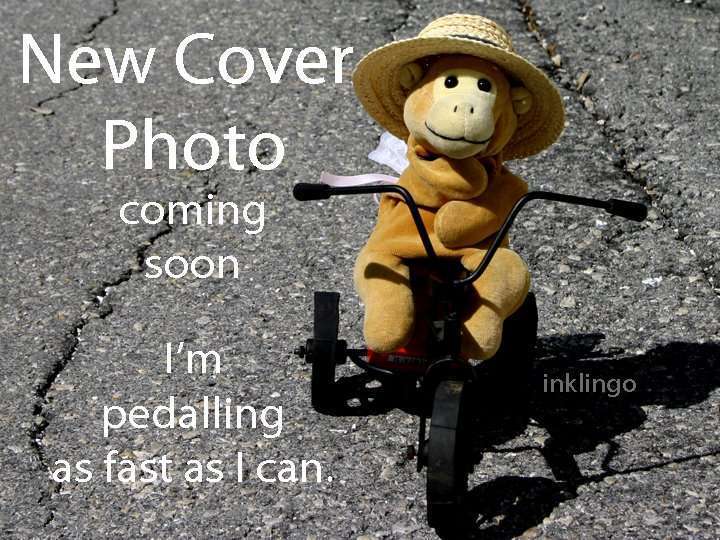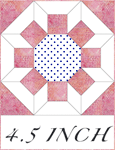
Welcome!
I love maps! This one is for Sissinghurst Castle and Gardens.
Russ and I visited Sissinghurst Castle in 1987.
If you see a maze when you look at Castle Wall and don’t know where to start, our sewing sequence “maps” should make it easy to navigate the paths.

SEWING SEQUENCE
When we hand piece, we can sew the shapes together in any order because we just sew from crosshair to crosshair and leave all the pressing to the end.
Just keep picking up pieces and sewing them together—if you like—in any order.
On the other hand, there are advantages to planning your route.
Cathi at Quilt Obsession posted a Castle Wall tutorial on her blog showing a sewing sequence she uses to sew Castle Wall.

Her “maps” are different from mine, but we have a lot in common because we plan a route that will allow for the maximum amount of “continuous stitching.”
1 
First, I sew 8 squares to the center octagon with one thread.
When I get to the end of a seam, I take a backstitch and pass the needle through to start the next seam. It is called “continuous stitching.”
You can see the technique for “continuous stitching” in this video. The example is Grandmother’s Flower Garden, but you’ll get the idea. At the end of every seam, look to see if the next piece can be added without cutting the thread. In this case, all 8 squares!
Continuous stitching is the hand piecing equivalent of chain piecing. It is very relaxing and therapeutic.
Ahhh. The zen of a needle and thread.
2 
Next, I add the 8 diamonds.
At the end of the first seam, I “circle the intersection” in the crosshairs before I start along the second side of the diamond. It ensures perfect points where the 4 shapes meet (diamond, 2 squares, octagon).
You can see the technique for “circling the intersection” in another short video on YouTube. The example is a six-pointed Kaleidoscope Star, but it is the same for any intersection.
3 
Third, I add the trapezoids.
They are even more fun. Start anywhere and just keep going all the way around.
In theory, I can add all 8 trapezoids with one thread but the thread would have to be really, really long. I cut the thread 15-18 inches, so it takes more than one for these 24 seams.
I think this is the most relaxing part of the sequence.
4 
Lastly, I add the 4 corners, one at a time. No more continuous stitching.
ONE – TWO – THREE
- Squares – 1 seam each
- Diamonds – 2 seams each
- Trapezoids – 3 seams each
and then 4 corners? Maybe not!
MONKEY’S BONUS TIP FOR HYBRID PIECING
Leave the corners until you are ready to assemble the quilt top by machine. Then you can have a chain piecing marathon adding corners to all of the Castle Wall blocks. “Hybrid” piecing (hand plus machine) is one of our favorite Inklingo methods.
I love this sewing sequence because it keeps me organized even if I only have a tiny sewing kit with me.
When I load up this eyeglass case with a Castle Wall block, I just make sure I stack the shapes in reverse order—corners, trapezoids, diamonds, squares, and finally the octagon on top.
The top piece in the case is always the one I need next. No thinking required! It’s also fun to see my block grow from the center.
Of course, if you use another sewing sequence, you can stack the pieces in order in your kit too.

For me, building a castle this way is easy and relaxing, and Cathi’s sequence works perfectly for her.
If you use a larger sewing kit like the SmartLap Portable Desk (also here), you can start with all of the pieces laid out in order, wrong side up.
Lay the pieces down again at the end of each seam to see if you can turn a corner and add another piece without cutting the thread, as shown in the GFG video.
WHAT SEQUENCE DO YOU USE?
There are endless ways to capture the castle! If you mix it up and modify the sewing sequence you will never be bored!
Thanks to Monkey and Cathi, you know at least 2 ways and you can make up your own unique sewing sequence too.
I’d love to know what sequence(s) you use.
There is a whole chapter on hand piecing in The Inklingo Handbook, including continuous stitching, circling the intersection, and hybrid piecing. If you buy it first, you can use the $10 coupon code to buy Castle Wall shapes to print on fabric. You might also be interested in the DVD lesson in Jane Austen’s Writing Table Quilts.

New to Inklingo? Start free!
Please start with the Guided Tour and the FREE Diamond Triangle Square shape collection. It includes the first chapter of The Inklingo Handbook. That and the Top 10 Tutes on this blog will give you a great start.
A choice of sizes!
Wouldn’t you just love to follow the path through the archway into the castle?
ARE YOU SUBSCRIBED?
Do you know any quilters who might be interested in Castle Wall? Let them know, okay?
Until next time, you can catch up on our earlier posts with ideas and settings for Castle Wall Quilts, a free Electric Quilt project file, and Cathi’s tutorial.
Let’s capture the castle together!
Linda & Monkey














I like this sewing sequence because it truly is a no-brainer. Same shapes are sewn until finished. No need to keep track of individual units. 1-2-3 seam structure works for me, and I don’t think I’ll get lost in the maze!
Thanks for all these great castle pics, both brick and mortar, and fabric!
There are so many different ways to build a castle wall! I am thinking of trying yet another method. Of course, this is all a really good excuse to just keep making those beautiful blocks. 🙂
It is so nice to see three very good methods explained so well in detail. I like your version but I think I will do as Cathi did and sew together the trapezoids and outer triangles first and then the rest of the block the way you suggest. Unfortunately it will be a while before I can start the blocks as I am still in progress with my Caribbean Seas quilt…
Stay warm up there and hugs to Monkey